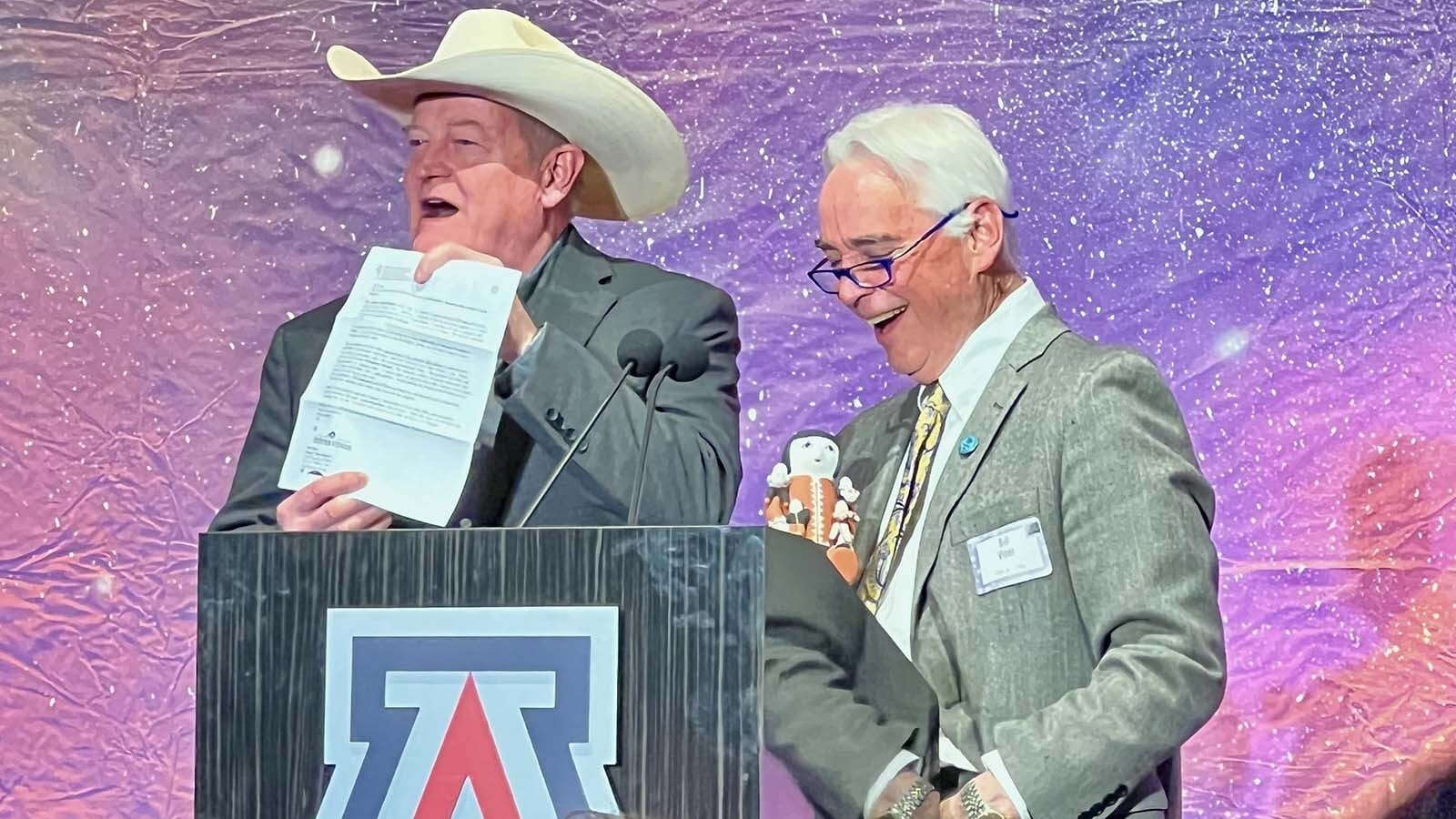Wyoming’s first dolphin is only $12,000 away from having a permanent home at the University of Wyoming. The plan is to keep it on the second floor of the S.H. Knight Geology and Earth Sciences Building on the university’s Laramie campus.
The UW Geological Museum has launched a campaign to acquire a skeleton of an 8-foot-long bottlenose dolphin. There are no dolphins or oceans in the Cowboy State now, but the aquatic mammal skeleton will help tell a 2.5 billion-year-old story of Wyoming’s underwater worlds.
Wyoming’s Oceans
The UW Geological Museum is working on “Wyoming’s Oceans,” a new exhibit highlighting the collections and research of the university’s past and present biologists, geologists and paleontologists.
“It’s probably the biggest exhibit we’ve installed in the last 30 years,” Dr. Laura Vietti, museum and collections manager, told Cowboy State Daily.
The exhibit will showcase the history of Wyoming’s oceans and seas and include spectacular fossils from the university’s collections, along with a floor-to-ceiling mural depicting each period when Wyoming was covered in water. Most people wouldn’t associate the landlocked state with oceans, but Vietti said the rock and fossil record tell a much different story.
“Wyoming’s been under the ocean longer than it's been dry land, geologically speaking,” she said.
‘A Nod To Don’
Vietti said part of the money for the exhibit comes from an estate gift from the late geology and geophysics professor Donald Boyd, an invertebrate paleontologist who spent 62 years teaching at the University of Wyoming. Boyd inspired generations of students and is largely credited with building the department into what it is today.
“When he passed away, he made a large donation to the department,” she said. “So, we’ve been using part of that funding to build this exhibit as an honor and a nod to Don.”
Highlights of the exhibit will include a 2.6 billion-year-old stromatolite (a prehistoric sedimentary formation and oldest fossil ever found in Wyoming), the skeletons of marine reptiles that ruled the seas during the Age of Dinosaurs, and fossils from various shelled creatures that made Wyoming their watery home.
The floor-to-ceiling mural will show the life restorations of these creatures and their environments directly across from their fossils to immerse visitors in the prehistoric oceans of the past.
Fossils from marine animals are the most common fossils in Wyoming and can be found almost anywhere. Vietti hopes the “Wyoming’s Oceans” exhibit will help people understand the fossils they see as they’re out and about in today’s rugged landscapes, which were the beaches and ocean floors of prehistory.
“The beauty of it is almost everything you’ll see came from Wyoming,” she said. “One of the things I really want to get across with this exhibit is what are common fossils in Wyoming, what they look like, and where they can be found in the state.”

Wyoming’s First Dolphin
There are no dolphins living in Wyoming today, and despite the trove of aquatic fossils found here, none are dolphins. Nevertheless, Vietti feels “Wyoming’s Oceans” wouldn’t be complete without a dolphin because it bridges the relics of the past with the ongoing research of the present.
“Because the UW Geology Department has so many researchers that do research in the modern oceans, we wanted to bring some of the modern ocean to Wyoming,” she said. “We wanted to complete the ocean story with a dolphin skeleton.”
The research of Dr. Mark Clementz, head of the Paleobiology Department, focuses on the evolution of shallow marine/coastal ecosystems through time and how vertebrate animals like dolphins and whales evolved and impacted those environments. He has studied the hoofed land mammals that returned to the ocean and became today’s whales.
Other geological and biological research at UW contributes to the understanding and conservation of modern oceans, which remain some of the most critical environments on the planet.
The $12,000 fundraising campaign will acquire an 8-foot-long replica of a dolphin skeleton that will be placed in the exhibit’s section highlighting the modern ocean and the ongoing oceanic research at UW. It would be the first official dolphin or whale to be housed in the state of Wyoming.
Vietti says they already have $4,000 raised.
In addition to the symbolism and awe-inspiring display, Vietti also sees the dolphin as a valuable teaching tool for students and visitors. Many museums in colleges and universities are used as teaching aids, and the UW Geological Museum is a valuable resource for undergraduate and graduate students.
The skeleton of a modern dolphin isn’t too different from the ichthyosaur and mosasaur skeletons that will also be featured in “Wyoming’s Oceans.” Even though they are marine reptiles and dolphins are mammals, their similar skeletal structures show how nature recycles the same shapes for similar environments, even if there are tens of millions of years between them.
Open Water
The UW Geological Museum is planning a Spring 2024 opening for the “Wyoming’s Oceans” exhibit. It’s also planning an invertebrate paleontology symposium that spring in honor of Dr. Boyd, which will feature renowned paleontologists highlighting significant discoveries from Wyoming’s prehistoric oceans.
In the meantime, Vietti encourages anyone interested in donating to the dolphin fund to visit the Give to UW webpage on the University of Wyoming website and type “UW Geological Museum” in the “Giving Priority” box.
When it opens, “Wyoming’s Oceans” will take up most of the UW Geological Museum’s second floor. Vietti hopes it will be an educational and immersive experience for everyone who wants to dive into the depths of Wyoming’s prehistoric past.
“We hope people will see this exhibit and picture 1,000 feet of water above their heads with all these dolphin-like creatures swimming over them,” she said. “It’s a hard thing to visualize today, but wherever you are in Wyoming, you’ll probably find a marine fossil. We hope our exhibit gives an immersive sense of place and environment.”
Andrew Rossi can be reached at arossi@cowboystatedaily.com.





